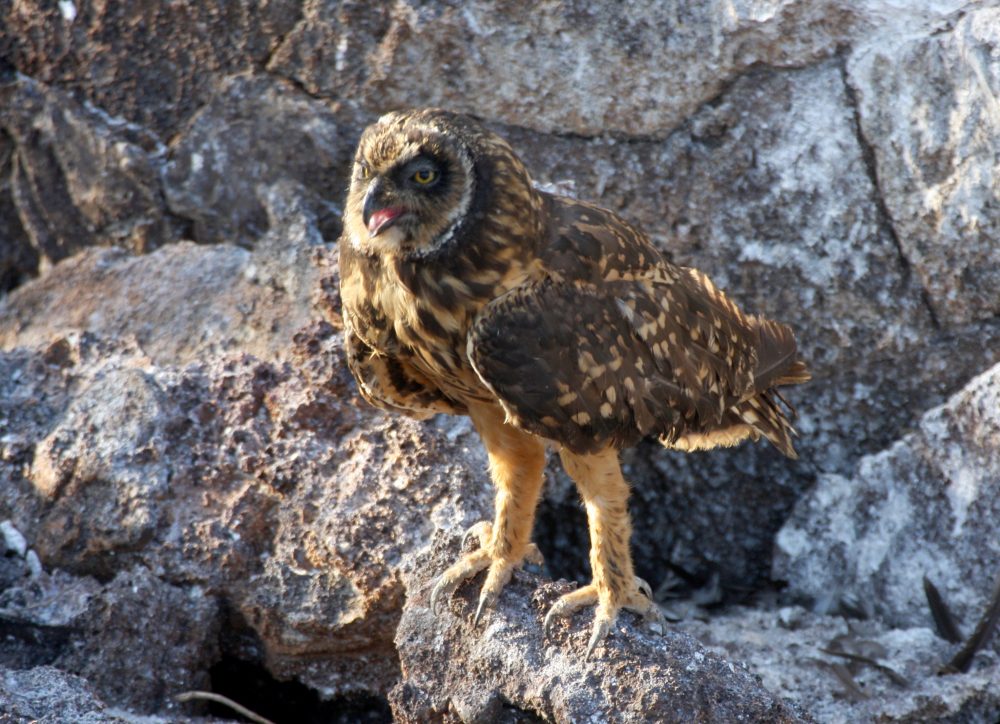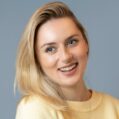
Galapagos short-eared owl
The Galapagos short-eared owl is a sub-species of the short-eared owl, a bird which found on all continents except Antarctica.
Galapagos short-eared owls are endemic to the Galapagos Islands and, as is frequently the case with Galapagos endemics, their coloration is darker and they are smaller than their mainland counterparts.
Their name arises from their small ear tufts. They have a wingspan of 85-100cm and are silent fliers. The sexes are alike, though the females are generally larger than the males. Immature plumage resembles that of the adults.

©Prof. W G Hale
They are found in open areas of grassland or lava rock, and hunt by flying low over these areas, feeding on rats, lava lizards, and birds. Most owls hunt at night, however the Galapagos short-eared owl has adapted to hunt in the daytime as well, to avoid competition with the Galapagos hawk. On a recent trip to Galapagos, GCT Deputy CEO Jen Jones came across an owl on the pathway eating a recent kill. The owl appeared totally unfazed by human presence.
On the island of Genovesa, the Galapagos short-eared owl has developed a unique hunting behaviour. The owls have started to hunt a colony of storm petrels. The petrels nest deep in tunnels in the lava rock, usually out of reach of the owls. However, the owls have learnt to stalk nearby, watching the petrels as they enter and leave the tunnels. The owls then wait close by for the petrel to leave the tunnel and catch them as they emerge into the light. Another technique they use is to hide in the entrance of the tunnel to grab a petrel as it flies in. They are able to hunt insects, baby marine iguanas, bats and birds much larger than themselves, such as boobies by striking at the back of the neck, taking the bird by surprise.
Owls also eat rats and mice, which is particularly positive in Galapagos as there are invasive rats on many of the islands. They are also great scavengers, like the Galapagos hawk, and are frequently seen feeding on carcasses of dead animals, particularly invasive goats.

©Luis Ortiz Catedral
Galapagos short-eared owls tend to nest under trees and shrubs, concealed by low vegetation, and may be lightly lined by weeds, grass or feathers. They have one clutch per year of two to four eggs. The eggs hatch in three to six weeks, and the young are ready to fledge at four weeks old. The juvenile birds are ready to mate and reproduce after one year. This owl is known to lure predators away from its nest by appearing to have a crippled wing. Their population was estimated to be around 9,000 pairs in the 1980s, but further research is needed to calculate their current population status.

